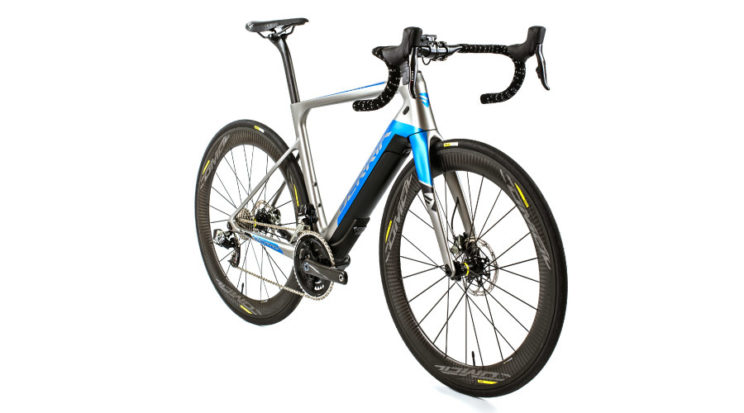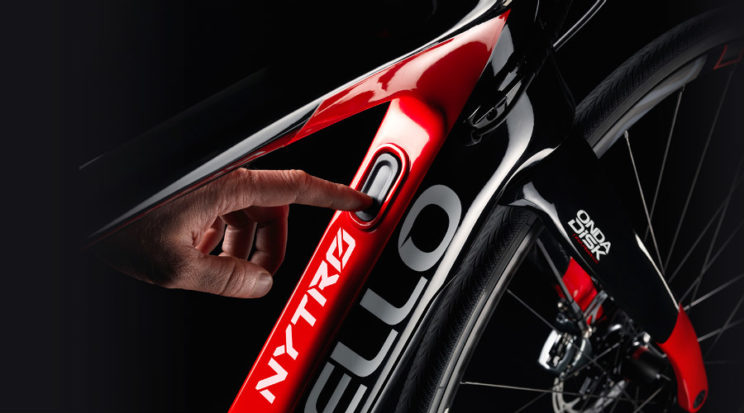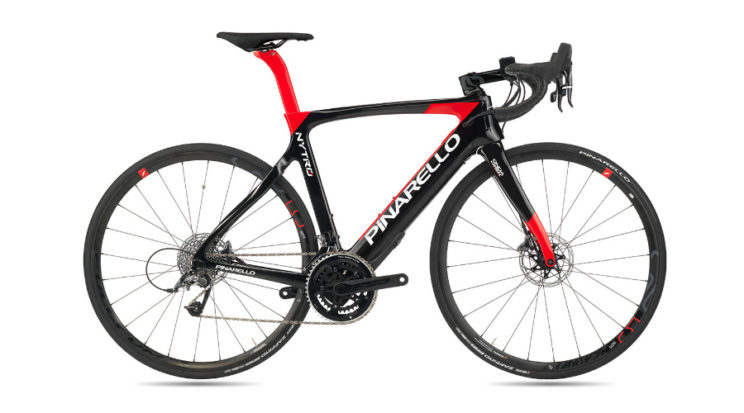Within the electric bicycle segment, road e-bikes are perhaps the most controversy among cyclists. Many consider that the essence of cycling adulterates and is a technology that encourages cheating in the competition.
Mountain electric bicycles are almost their own category and are used to make more demanding routes, with more accused slopes, more technical stretches ... They are increasingly accepted even among those who some years ago criticized them fervently. But a road bike for exactly?
From a purely cyclo -tourist perspective
Road e-bikes They are models that have been well received by a specific cyclist profile that fervently defends this new way of pedaling. For practical purposes, is it worth buying an electric road bike? Who is interested in such a bicycle. We answer these issues with this guide on road electric bicycles.
What exactly is an electric road bike?
[Captation Id = "Attachment_3084" Align = "Alignnone" Width = "744"]

Image: Berria[/caption]
We first clarify the concept of road electric bicycle. It is an assisted pedaling bike thanks to the assembly of an engine, a battery and electronic systems with sensors. With the latter, it is possible to adapt the help to the pedaling of the cyclist and turn it off as long as 25 km/h are reached. Thus, it is the same system as mountain, grave or urban e-bikes.
On the other hand, the bikes retain a good part of the design and geometry that conventional versions, with a generally endurance or great background design. They have the logical modifications in the diagonal and pedalier tube due to the inclusion of the motor or battery. But the rest of the elements are the same or very similar to those of a engine without engine.
However, they have some different peculiarities from those of the rest of e-bikes of other modalities, as we will see below:
Engines
Unlike mountain electric bicycles and some urban or serious we can find versions of rear bushing engines, instead of being located in the Pedalier box. Not being so important the distribution of weights or lowering the center of gravity of the bike, as in an MTB, manufacturers can play more with this position.
As for benefits, they are generally reduced than a mountain e-bike, also due to the lower weight of the painting and components. They are similar to the middle torque of an urban electric, between 30 Nm and 40 Nm. Likewise, the most used propellers are different, more compact, usually from the Fazua or Mahle Ebikemotion (rear bushing).
The weight of a road electric bicycle, with carbon box, ranges between 10 and 14 kg
Integrated batteries
The
Most recent models of electric road bicycles They come with the integrated battery inside the diagonal tube to conserve aesthetics, geometry and contain weight. Its capacity is usually smaller than in mountain. It ranges between 250 Wh and 500 Wh, for the 600 Wh or even 750 Wh that already include E-MTB.
Control controls
There are also differences with respect to mountain electric bicycles. In general, the display attached to the electrical assistance system is dispensed with, opting for a compact, ergonomic and intuitive remote control. Some of them include LED indicators to show the battery charge level. Others have connectivity with
Cycocomputer (Garmin, Wahoo, Sigma) to see energy data or screen assistance mode.
Transmissions and developments
An element that can generate doubts among those who consider buying a bicycle of this type is transmission. Mountain e-bikes use monopathic transmissions, something that on the road does not finish being accepted. Are the developments of a road electric bicycle the same as those of a normal bike? Usually yes, opting for a purely great background, with compact dishes (50/34) and Cassette 11-32 or 11-34. The idea is that pedaling is as natural and comfortable as possible.
But the
e-road It is also becoming a special preserve for the expansion of road monopathic transmissions. There are already reference models that take it standard, such as the Specialized Turbo I create SL in relation 1x11 and 46 teeth dish. On the other hand, chains are resistant and have special coatings to contain the greatest wear derived from electric thrust.
Brakes
In this concrete bicycle segment, the discs have also ended up imposing for their best braking in various conditions and integration with wheel and box. The diameter of the discs is also generous, 160 mm., To facilitate greater cooling.
The maximum autonomy of a road electric bicycle is usually around 100 kilometers
For what cyclist profile they are recommended

Views its main characteristics, it is time to answer the big question of this post. These electric bicycles are intended for road cyclists that, by age or certain physical limitations, cannot complete high distance road routes or upload ports comfortably.
They can also be an attractive option for any cyclist that is not used to going on the road. A second bike option to make long -distance routes in an affordable and comfortable way, complete ports chained or, simply follow the most experienced group companions rhythm.
The cyclist type profile that bought a road electric bicycle is the person over 50-55 years that has been constantly practicing cycling in a local club and that, due to age, has trouble following the Same rhythm that their grupeta companions follow, usually younger. So he decides to go to a
Road e-bike to continue making the same routes and at the same rate.
Maintenance: Is it more expensive than that of a conventional bicycle?
It is one of the issues that also generates many doubts and can stop the purchase of a
e-road. The answer is the same as we offer in our purchase guide on
Mountain e-bikes. Certain components will suffer more premature wear than in the conventional bike: the chain, brake pads and the rear tire, by the action of electrical assistance.
In addition, the possibility of engine or battery breakdown will have to be added. They are usually durable and do not present big problems. But you always have to keep in mind that, in case of breakdown, it will be quite expensive. Performing periodic reviews with the help of a mechanic and killing the e-bike clean
Avoid washing with pressure water), you can enjoy the bicycle without major problems.
Tips for choosing an electric road bike
[CAPTION ID = "Attachment_3096" Align = "Alignnone" Width = "744"]

Image: Pinarello[/caption]
If you have already decided to buy an electric road bike, look at the following aspects to choose the best to your needs, objectives and type of use:
Battery capacity and autonomy
They are related but not equal concepts. Many brands give approximate autonomy data or directly do not mention them. This is because the real autonomy of the
e-bike It depends on external and variable factors such as the cyclist's weight, its way of pedaling, the type of land or weather conditions.
The battery capacity is an objective fact and can give us an idea of the level of approximate autonomy with a single load. For long outputs, 90-100 km, a large capacity battery, 350 WH onwards. However, there are models with an option to buy apart a battery extensor that is installed in the carrier anchor and add extra kilometers.
Motor power delivery
The delivery of motor power - or motor torque - is a parameter that is measured in Newton Metro (NM). The greater this data, the faster and more force the entry of electrical assistance will be. Delivery becomes equivalent to acceleration.
But before looking at the torque data, we recommend that you pay attention to the different assistance modes available. Some electric bicycles only offer a power delivery mode, while others have different ways depending on the type of use required in each case. There are also bicycles that offer the possibility of customizing power delivery modes through the associated software or mobile application. It is better that pedaling assistance is as similar as possible to that of a conventional bike.
Natural and contained assistance, in addition to customizable, will give you fair help at the right time. In addition, it will allow the bicycle to better control, maintain a constant pedaling cadence and end up saving battery.
Our favorite road e-bikes
[Captation Id = "Attachment_3095" Align = "Alignnone" Width = "744"]

Photo: Pinarello[/caption]
The supply of electric road bicycles grows year after year. Brands and manufacturers are increasingly paying attention to this cycling segment. This is the top-5 that we propose. This selection has been made based on our experience of use and personal preferences.
Specialized Turbo Creo
A state -of -the -art electric bike although high price. It has great background geometry and mini Future Shock front suspension, integrated into the address pipe. It offers 195 km of autonomy and aluminum and carbon versions.
Trek Domane +Lt
Exclusive carbon model. Integrates the Fazua assistance system with up to 104 km of autonomy. It is inspired by the geometry and design of the conventional Trek Domane.
Scott Addict Eride
Scott's e-road has a HMX carbon box and Mahle rear bushing engine, which favors a more conventional bike aesthetic. It also has an answer version for women.
Pinello Nytro Roadstar
A reference brand in the world of the road that has its own electrical model. The Nytro Roadstar has Fazua three -way assistance integrated in an aluminum box with carbon fork.
Lapierre e-Sensium
One of the most attractive options in terms of value for money. It has an aluminum and electrical assistance box with Mahle rear bushing. Within the range specific versions of women or conventional straight handlebars can be found.
 Image: Berria[/caption]
We first clarify the concept of road electric bicycle. It is an assisted pedaling bike thanks to the assembly of an engine, a battery and electronic systems with sensors. With the latter, it is possible to adapt the help to the pedaling of the cyclist and turn it off as long as 25 km/h are reached. Thus, it is the same system as mountain, grave or urban e-bikes.
On the other hand, the bikes retain a good part of the design and geometry that conventional versions, with a generally endurance or great background design. They have the logical modifications in the diagonal and pedalier tube due to the inclusion of the motor or battery. But the rest of the elements are the same or very similar to those of a engine without engine.
However, they have some different peculiarities from those of the rest of e-bikes of other modalities, as we will see below:
Image: Berria[/caption]
We first clarify the concept of road electric bicycle. It is an assisted pedaling bike thanks to the assembly of an engine, a battery and electronic systems with sensors. With the latter, it is possible to adapt the help to the pedaling of the cyclist and turn it off as long as 25 km/h are reached. Thus, it is the same system as mountain, grave or urban e-bikes.
On the other hand, the bikes retain a good part of the design and geometry that conventional versions, with a generally endurance or great background design. They have the logical modifications in the diagonal and pedalier tube due to the inclusion of the motor or battery. But the rest of the elements are the same or very similar to those of a engine without engine.
However, they have some different peculiarities from those of the rest of e-bikes of other modalities, as we will see below:
 Views its main characteristics, it is time to answer the big question of this post. These electric bicycles are intended for road cyclists that, by age or certain physical limitations, cannot complete high distance road routes or upload ports comfortably.
They can also be an attractive option for any cyclist that is not used to going on the road. A second bike option to make long -distance routes in an affordable and comfortable way, complete ports chained or, simply follow the most experienced group companions rhythm.
The cyclist type profile that bought a road electric bicycle is the person over 50-55 years that has been constantly practicing cycling in a local club and that, due to age, has trouble following the Same rhythm that their grupeta companions follow, usually younger. So he decides to go to a Road e-bike to continue making the same routes and at the same rate.
Views its main characteristics, it is time to answer the big question of this post. These electric bicycles are intended for road cyclists that, by age or certain physical limitations, cannot complete high distance road routes or upload ports comfortably.
They can also be an attractive option for any cyclist that is not used to going on the road. A second bike option to make long -distance routes in an affordable and comfortable way, complete ports chained or, simply follow the most experienced group companions rhythm.
The cyclist type profile that bought a road electric bicycle is the person over 50-55 years that has been constantly practicing cycling in a local club and that, due to age, has trouble following the Same rhythm that their grupeta companions follow, usually younger. So he decides to go to a Road e-bike to continue making the same routes and at the same rate.
 Image: Pinarello[/caption]
If you have already decided to buy an electric road bike, look at the following aspects to choose the best to your needs, objectives and type of use:
Image: Pinarello[/caption]
If you have already decided to buy an electric road bike, look at the following aspects to choose the best to your needs, objectives and type of use:
 Photo: Pinarello[/caption]
The supply of electric road bicycles grows year after year. Brands and manufacturers are increasingly paying attention to this cycling segment. This is the top-5 that we propose. This selection has been made based on our experience of use and personal preferences.
Photo: Pinarello[/caption]
The supply of electric road bicycles grows year after year. Brands and manufacturers are increasingly paying attention to this cycling segment. This is the top-5 that we propose. This selection has been made based on our experience of use and personal preferences.












